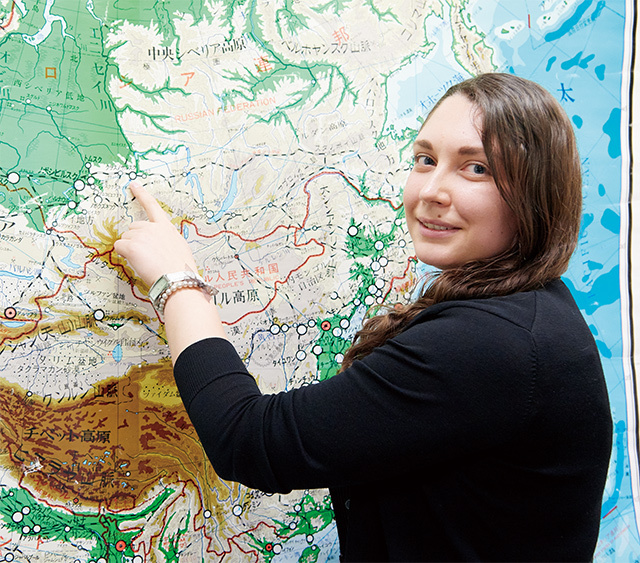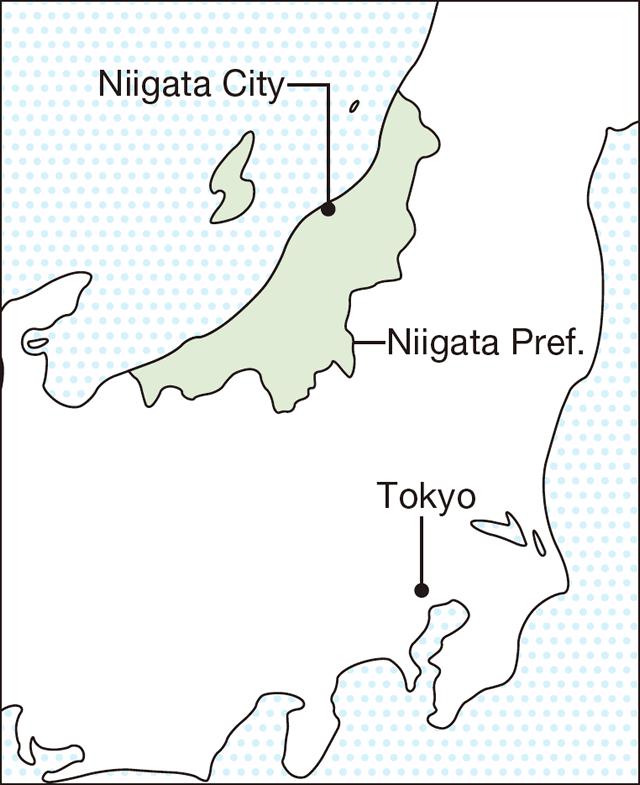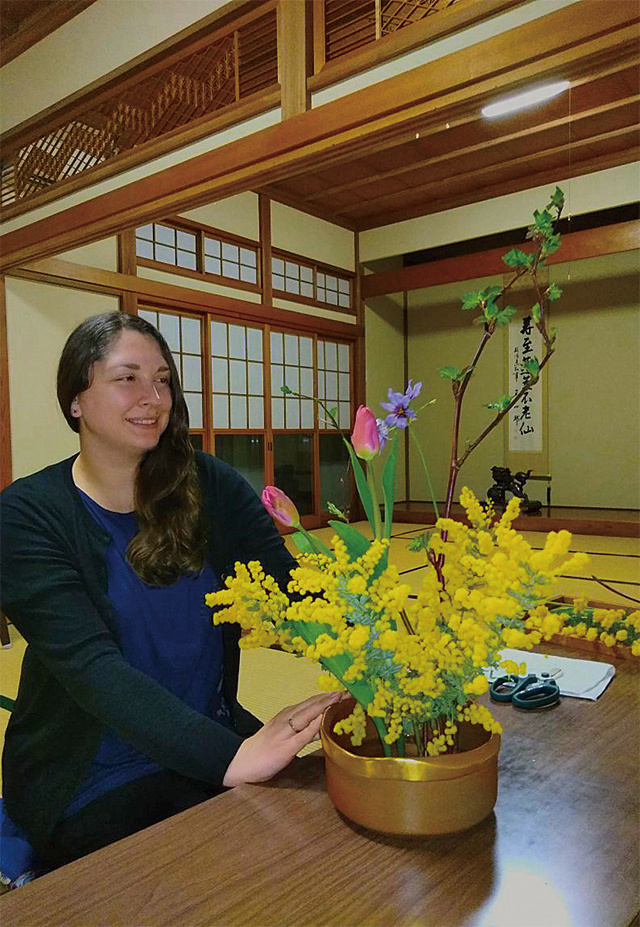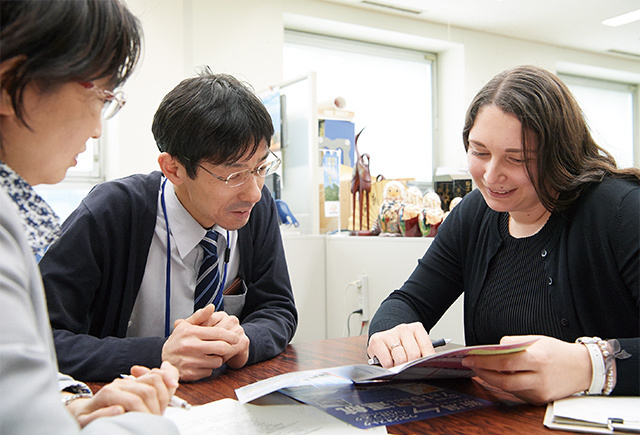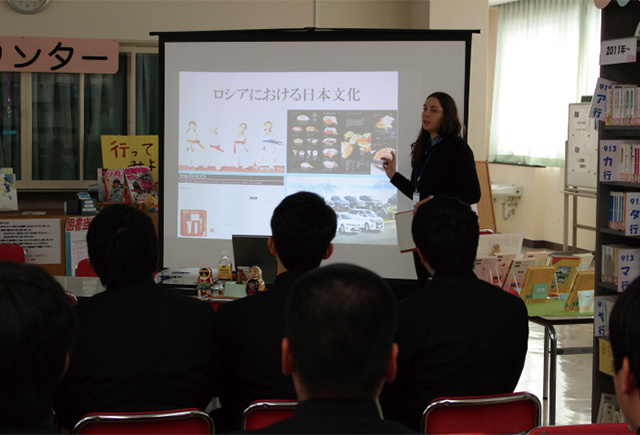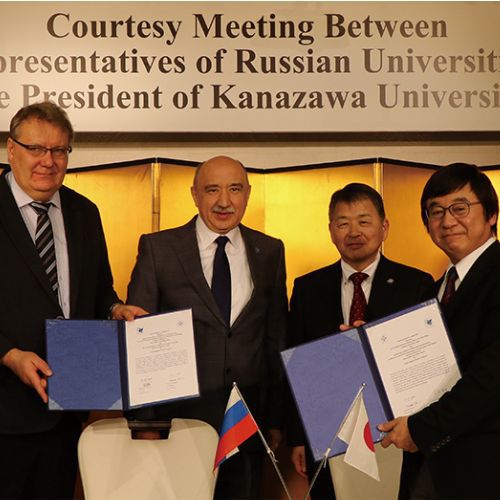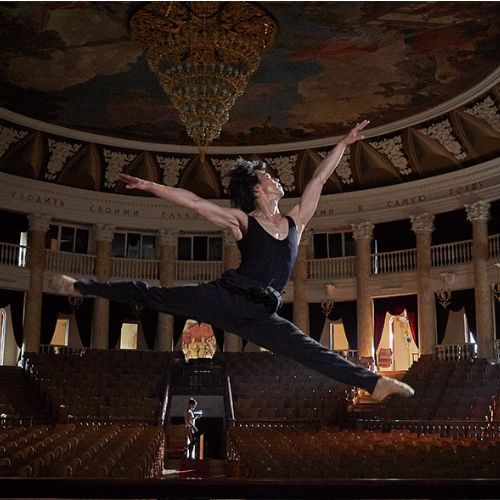Languages fascinate me, and I find Japanese to be the most enchanting of them all. When my English club’s teacher first introduced me to the Chinese characters that are used in written Japanese, the ancient pictographs seemed somehow very romantic to me. That’s probably because we Russians rarely encounter these symbols in daily life, especially in my hometown of Krasnoyarsk.
So perhaps it was only natural that I went on to study Japanese at Siberian Federal University. We had an excellent Japanese center on campus where we interacted with native Japanese speakers, attended lectures given by teachers from Japan, and also took part in cultural events. I enjoyed being a part of this activity so much that I worked there for four years after graduation. Part of my job, both then and now, is exploring, explaining, and then bridging the differences between Russia and Japan. I sometimes have to encourage one or both sides to go out of their way to amicably compromise. A perfect example of this is the clash between academic calendars. In Japan, classes start in April, but in Russia classes start in September, which causes problems with teacher availability and the arrangement of student exchange programs.
Ekaterina Efimova
Born in Krasnoyarsk, Russia. Graduated from Siberian Federal University. Has been working as a CIR in Niigata since August 2016. Loves to travel around Niigata Prefecture, read manga and practice ikebana.
In spite of challenges like this, my colleagues and I racked up some major achievements. These included many activities that helped bring our countries closer, such as founding Japanese literature and movie clubs, starting student exchange programs and holding kendo tournaments. On the business side, we saw the creation of a Toyota engineering center and the launch of the Krasnoyarsk Smart City project, which involves architectural firm Nikken Sekkei working with my alma mater to create a more eco-friendly urban environment.
These success stories helped Krasnoyarsk and Siberian Federal University foster huge breakthroughs in Japan-Russia relations. This was immensely satisfying, but it left me dreaming of a life living and working in Japan. So I applied to become a Coordinator for International Relations (CIR), which involves working in Japan as part of the Japan Exchange and Teaching (JET) Programme. Soon after applying, I was accepted and dispatched to Niigata, a port city on Honshu, Japan’s main island.
I quickly became accustomed to my new life here, moving together with my husband, who works here as a translator. We love the nature and the beautiful sunsets, as well as how close we are to the Sea of Japan. As we grew up far from sea and sand in our land-locked hometown, we love visiting Niigata’s many beautiful beaches.
I work for the Niigata Prefectural Government Office. This often involves smoothing out cultural differences and closing the communication gap. In that sense, my work here often resembles my previous job, but with a twist. For example, part of my job now involves encouraging somewhat delicate conversations. Russian visitors often misunderstand instructional posters and promotional photos for hot springs and public baths. In these images, bathers are often shown enjoying the baths while wearing towels. Tourists often don’t realize that those towels are only shown to protect the sensibilities of the viewers! In reality, towels should never touch the water in the baths. Bathers mustn’t wear towels except while showering or drying off.
On a more serious note, my team and I have been contributing to events in Khabarovsk and Vladivostok, which are happening as part of the Russia-Japan Cross Cultural Year in 2018. As part of this, Niigata is ramping up the cultural exchange still further.
Although I’m very happy here, life in Japan hasn’t been without challenges. In Krasnoyarsk we rarely have to put up with humid weather, so summers here are tough. It’s also hard for straight-talking Russians like me to adapt to Japanese-style communication, where much is left unsaid. Thankfully I’m getting better at reading between the lines!
Something that has helped me become more in touch with Japanese culture is studying traditional flower arrangement, known in Japanese as ikebana. There’s something very meditative about ikebana, which is all about communicating feelings without the need for words.
So in spite of the challenges I face, or perhaps because of them, I cannot recommend the JET Programme strongly enough. Anyone interested in Japan and cross-cultural exchange should consider applying.
I’m undecided on what I’ll do when I finish my term as a CIR. I might choose a career in tourism, or find a job that helps Russian and Japanese companies work together. Either way, I hope to continue building on the skills I’ve been developing since I graduated, and I sincerely hope to continue living and working in Japan.


























